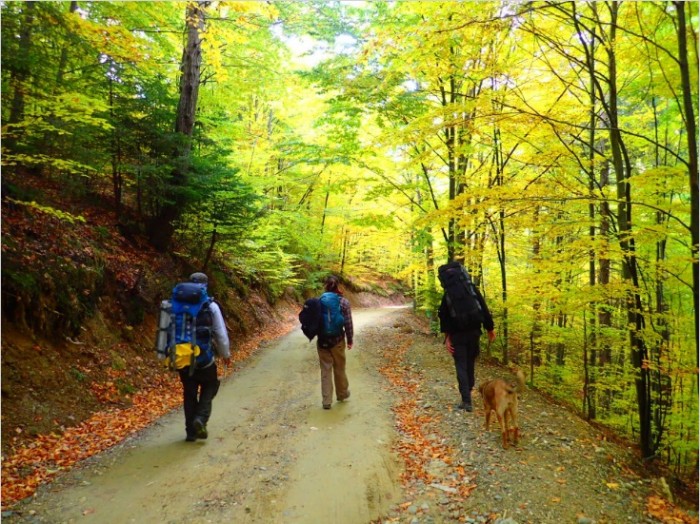An Idiot’s Guide to Choosing a Backpack in Singapore
Don Clyde Clyde is a globe-trotting wordsmith rockstar with dreams of grandeur. His passions include playing the blues, following the world’s best football club Liverpool FC, and exploring the world. Read all about his exploits at ClydeMeetsWorld and ClydeMeetsWorldii.
I should probably get this out of the way right from the beginning. I am not an expert when it comes to backpacks. Not by any real measure, anyway.
All I am is a humble traveller with just a little more experience roughing it out in the world than the average Singaporean. I’ve not climbed Everest or even been to Nepal. Heck, I’ve not even scaled Kinabalu.
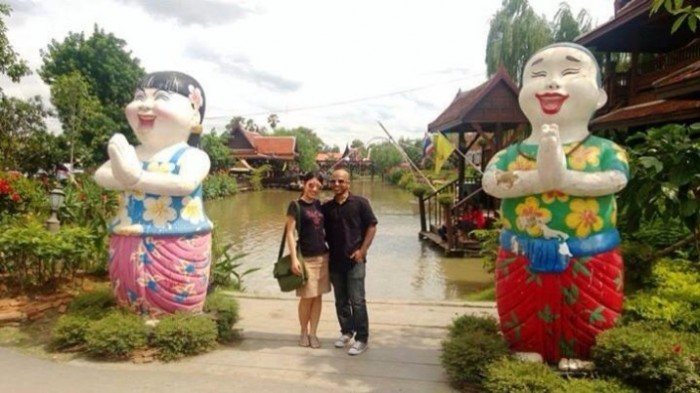
Fiancé and me looking very ordinary in Bangkok
I don’t really know what you’d need if camping out on the deadly face of Kilimanjaro is your goal. If you’re an expert, then you probably shouldn’t be reading this. What I do know though is perhaps more useful to the novice traveller than a lot of the expert advice readily available out there.
If you’ve never backpacked before and have no idea what a beginner like you really ought to be considering when choosing a backpack, then you’ve come to the right place.
What you’re about to read is this travel-idiot’s practical guide on how to choose the right backpack for you.
Also read: Where to Find Backpacks, Winter Clothes & Other Travel Essentials in Singapore
From one novice to another…
If you’ve read my previous stories on TripZilla (and I strongly urge you to), then you’ll know that I’m quite new to the whole backpacking game. My one-year road-trip across the continent in 2014 was a pretty intense crash-course though, and I think I’ve come away from it having learned a few things.
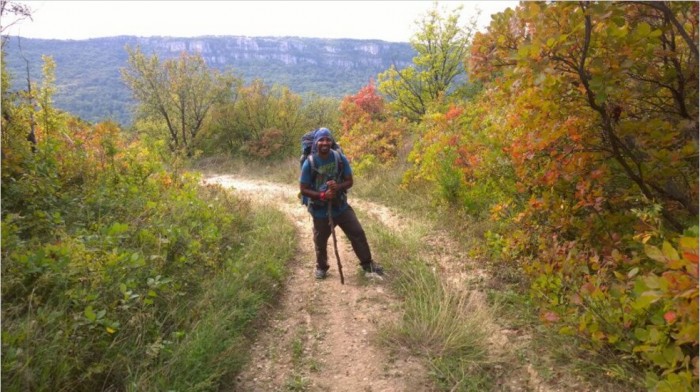
Bugging out in Bulgaria
If you’re still here reading this, then you’ve probably already read a few articles like mine, and you’re thinking it’s about time you set off on your own adventure.
You’re right – it is about time. But what about all that gear you’ll need?
There’s a glut of backpack information out there, arguing the merits of one brand or series over the other, and it’s hard to know whose advice to take. Choosing the right backpack, if you’re a novice like me, isn’t about going for the best brand or the latest cutting edge technology though.
The factors that average backpackers like us need to consider are… a lot more down to earth:
Top-loading vs. Front Loading
No, we’re not talking about washing machines. Backpacks generally fit into these two categories too.
Hiking backpacks are almost all top-loading, because that way, things don’t all fall out when you stop mid-hike to take something out. These are the backpacks you’re probably most familiar with – the ones that open and close at the top, with a hood and a drawstring.
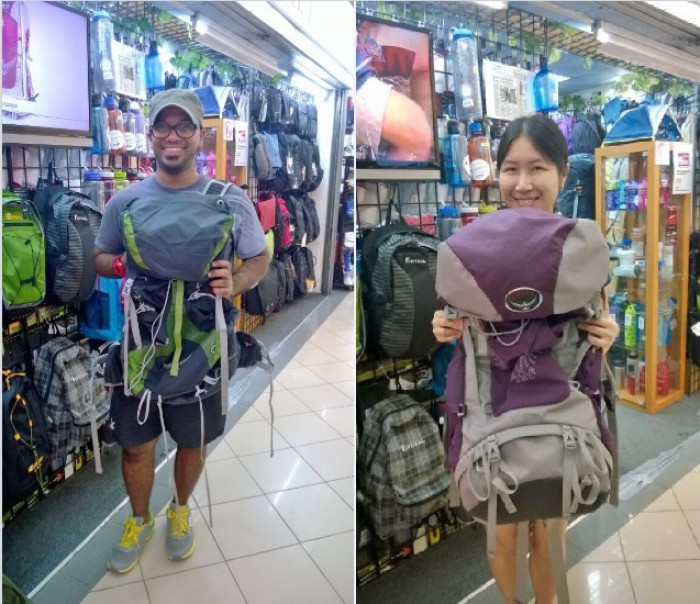
Showing off our new top-loading Osprey hiking backpacks. Some backpacks, like Dianne’s, are made specifically for women.
The downside to these types of backpacks becomes apparent when you’re trying to retrieve an elusive phone charger or a bar of soap buried deep in your bag somewhere. Having to rummage for stuff can be annoying at times, but after a few weeks of packing and unpacking your backpack regularly, you should have a system worked out to make the whole retrieving of things a lot easier. Also, most top-loading backpacks have a big zipper opening near the bottom too, to make it easier to get stuff out that’s all the way down.
Front-loading backpacks make use of zippers that open the bag up all the way. They’re super easy to pack, but not super ideal for tricky hikes up mountain passes or along cliff edges (because of that stuff-falling-out reason that I talked about earlier). Also, front-loading bags tend to be smaller, and they aren’t usually designed to hold tents and sleeping bags, and sleeping mats, and all of the other cool outdoor things that make backpacking so fun.
It might not be very obvious from my tone, but I’m not a big fan of front-loaders.
Aesthetics matter
Picture this. It’s your first time out on the road, and you can’t wait to snap a gazillion rugged photos of yourself and share them with your jealous friends.
The last thing you want is an ugly backpack on you, spoiling all of your shots.
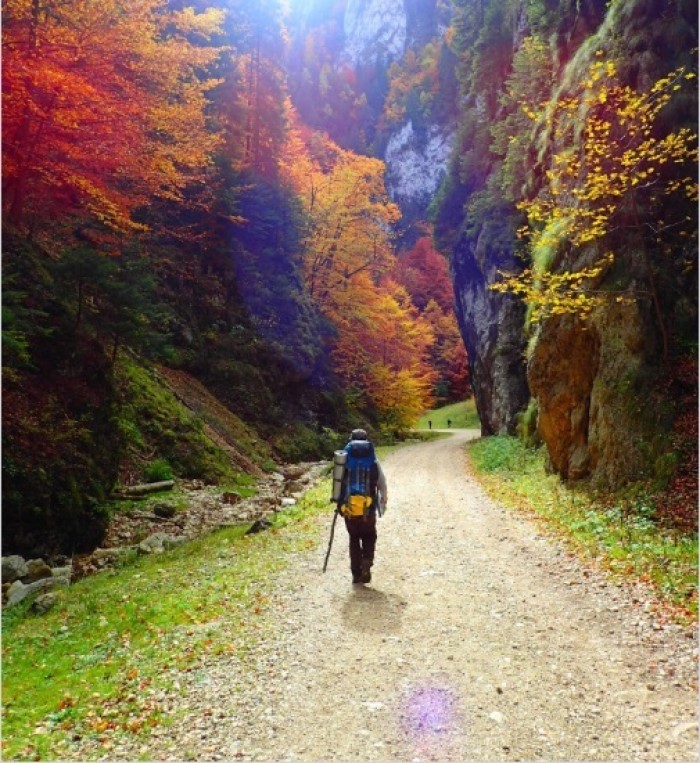
Trekking in Transylvania. You don't want an ugly backpack ruining shots like these!
It may sound trivial but it’s true. For most of us superficial types, carrying a good-looking backpack makes us feel good.
When you’re lugging your luggage around on your back every day for weeks on end, your backpack practically becomes another layer of clothing. So go ahead and choose the one that comes in your favourite colour, or the one that reminds you of your favourite sports car.
Travelling is meant to be fun, and it’s hard to enjoy yourself when there’s an ugly old hunk of backpack attached to you all the time.
All roads lead to Queensway (except the one that leads to Bedok)
The best place to look for a backpack is somewhere that deals in a lot of brands. Sports Connection over at Queensway Shopping Centre is pretty much the best one-stop shop for backpacks of all brands in Singapore.

Another good place to go to, now that it’s open, is Decathlon over in Bedok. Decathlon is like an Ikea for sports goods. Affordable quality products that look and feel great, and that cater to the sports and outdoor enthusiast’s widest possible range of needs.
Much like how Ikea sells its own brand of meatballs, Decathlon sells its own brands of everything. Spend a little time with some European backpackers and you’ll be surprised by how many Quechua products they’ve all got on.
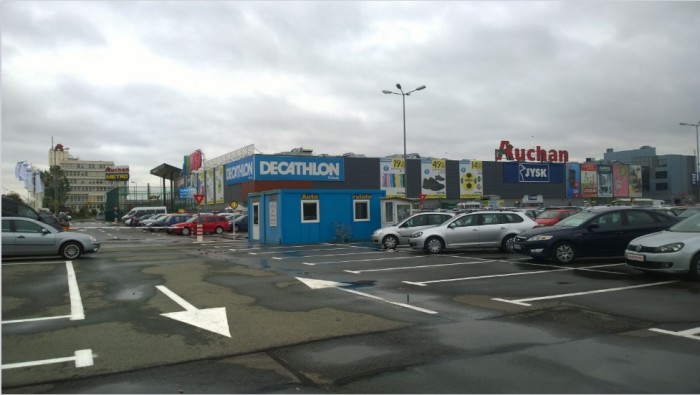
Decathlon is a popular brand all across Europe. This is a Decathlon I went to in Bucharest. The stuff over there sells much cheaper than it does back here in Singapore.
Decathlon is a treasure trove of goodies for backpackers and adventurers, and it’s easy to get lost in there for hours. The backpacks they sell are good and affordable, and it won’t do you any harm checking out what they’ve got.
Go easy on your wallet…
The best backpacks out in the market aren’t for us. We who aren’t planning on scaling Everest anytime soon don’t need them, and we probably wouldn’t really know what to do with them if we had them.
Get something more affordable and use that money better out there on the road. Cost is perhaps the biggest consideration novices like us need to factor in when choosing a backpack.
In Singapore, you’ll find that most of the big backpack brands start selling at 200-250 bucks. If you’re lucky, you’ll find something on offer going for closer to 100-150.
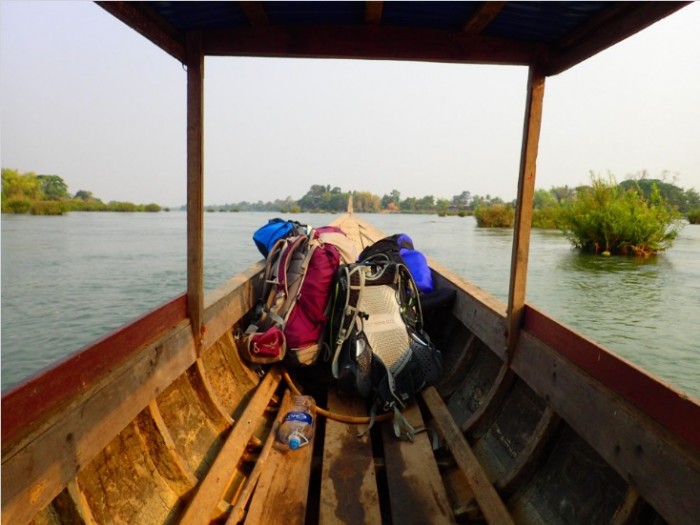
My green-grey Osprey, with its fancy but not-so-practical mesh back support, was on offer when I bought it for a meagre 120 bucks. Dianne’s purple Osprey went for a more conventional 220 bucks.
If you’re really REALLY looking for a bargain, then maybe consider going for a local brand like Vertikal. These start selling at about 100 dollars, but there is a trade-off in terms of looks and quality (the materials used are typically heavier and more canvas-y, unlike the lighter and sleeker looking materials used by the more famous brands).
Bigger backpacks, of course, cost more, which leads me to my next point…
Invest in capacity
The rule of thumb is that all of the stuff you’re bringing should fill your backpack just 75% of the way up. 25% of your backpack should be free, which makes sense, because sometimes, you’re going to want to pack an extra shopping bag worth of food in there, or buy a football-sized souvenir on impulse.
Backpack capacities are measured in litres. When someone tells you that you’re looking at an Osprey Aether 70, that 70 refers to the 70 litres of stuff the backpack will hold. Sometimes, you’ll come across something like a Deuter Quantum 70 + 10. The +10 here means that while the backpack is designed primarily to hold up to 70 litres, it’s capacity can be expanded by another 10 litres if necessary.
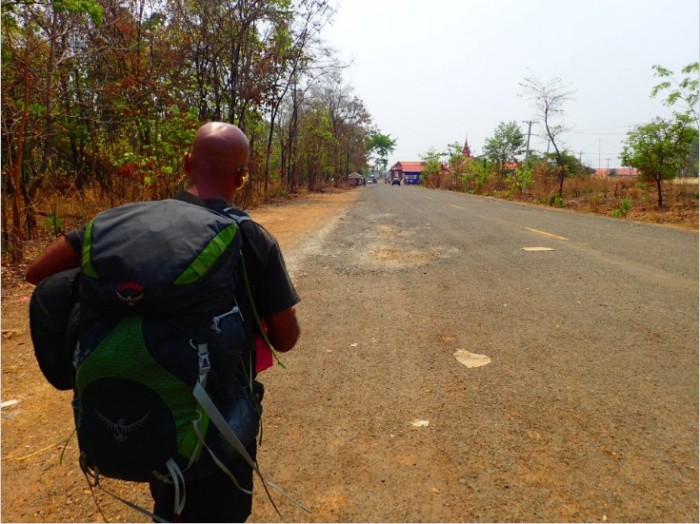
Crossing the Laos-Cambodia border with the 58 litre non-expandable backpack I bought in Singapore
When I bought my first backpack in Singapore, I got myself one that was just 58 litres big. I wasn’t a heavy packer after all, and all I thought I needed was space for a few t-shirts and berms, a raincoat, a water bottle, a small toiletry pouch, cables and adapters, and a few other miscellaneous knick-knacks. I wasn’t a camper or a hiker back then, and I didn’t think I’d ever need a tent or a sleeping bag, but that’s eventually what happened.
Halfway through my trip, I realised I needed something a lot bigger to keep all of my camping gear in, and so I bought for myself an 80 litre backpack in China and sent my 58 litre Osprey back to Singapore by China post.
What I’m trying to say is this: pack light but get something way bigger than you think you’ll need. You’ll be surprised by how fast your possessions accumulate while you’re out on the road, and by how much new stuff you’ll need to get along the way.
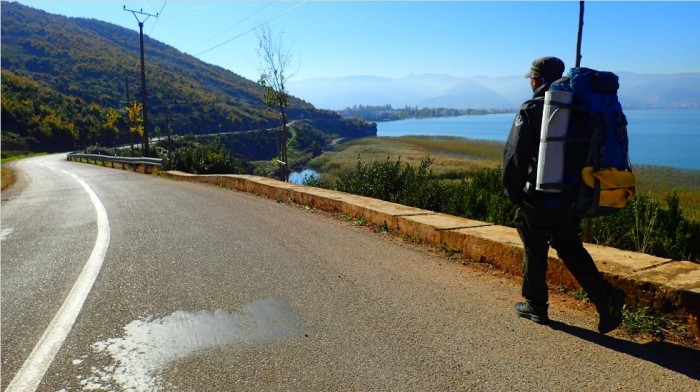
Walking the spectacular Macedonia /Albania border-crossing with my ginormous China-brand backpack that cost just 80 Singapore dollars, and that I still use to this day. The external straps at the side and bottom are great for carrying your hiking mats, tents, and footwear.
Try packing your daypack in your backpack
This is how it is when you backpack. If you’re doing it right, you’re on your feet a lot of the time, looking for a place to rest your head, or trying to get a bus ticket out of town. You’ve probably got about 15 kilos of weight in your main backpack, and in front of you, you’ve got another 3-5 in your smaller daypack.
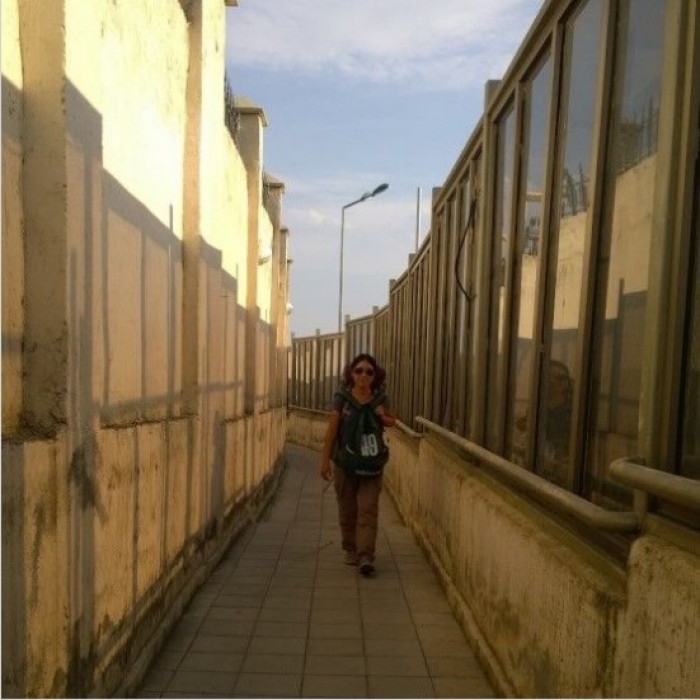
Dianne carries her daypack in front of her as she crosses the border from Azerbaijan to Georgia
Every backpacker needs a daypack to keep the stuff you need most handy close to you during a daytrip or lengthy commute. Carrying your daypack in front of you while you’re hauling your main backpack behind you isn’t really that great though.
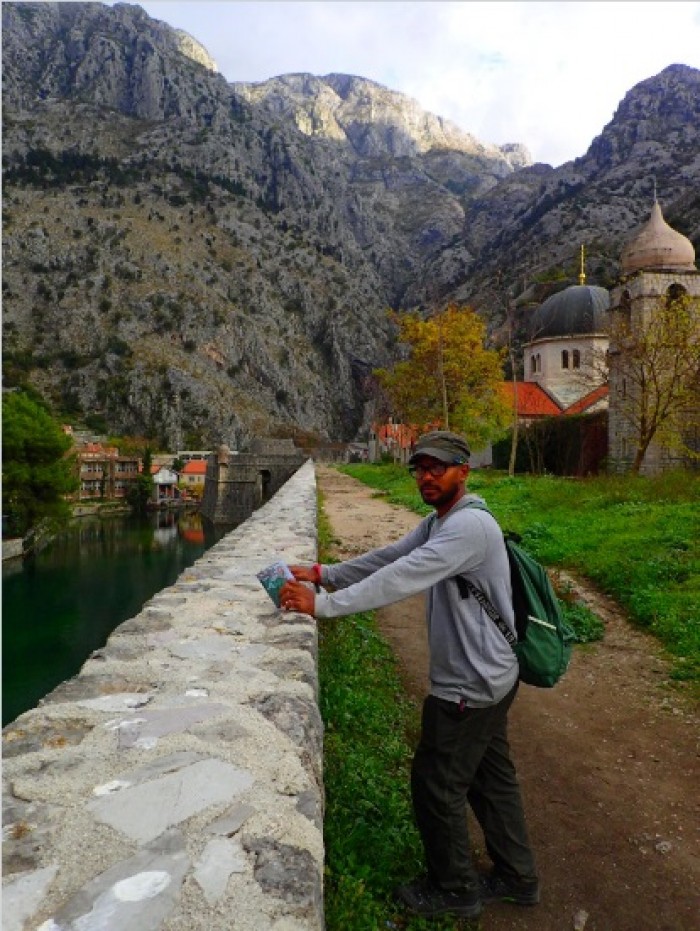
Daypacks, in my humble opinion, don't need to be fancy. This little green one I'm using here in Montenegro was bought at a bazaar in Kyrgyzstan for just 3 Singapore dollars, after I got the shopkeeper to reinforce some of its stitching with a sewing machine.
All backpacks come with nifty little waist straps that transfer most of the backpack’s weight to your strong and sturdy hips. Your legs bear the brunt of the weight as a result, which is a good thing. When you carry your daypack in front of you, all of its weight rests squarely on your shoulders, and that’s not fun.
I personally recommend getting a backpack that’s big enough to keep all of your things in, including your daypack.
Once I got my substantially bigger backpack in China, I was relieved to be able to simply stuff my little daypack into my main backpack after a long commute before setting off on foot. The reduced strain on my shoulders and neck was palpable, plus my hands were now suddenly a lot more free in front of me without a daypack to have to manoeuvre around.
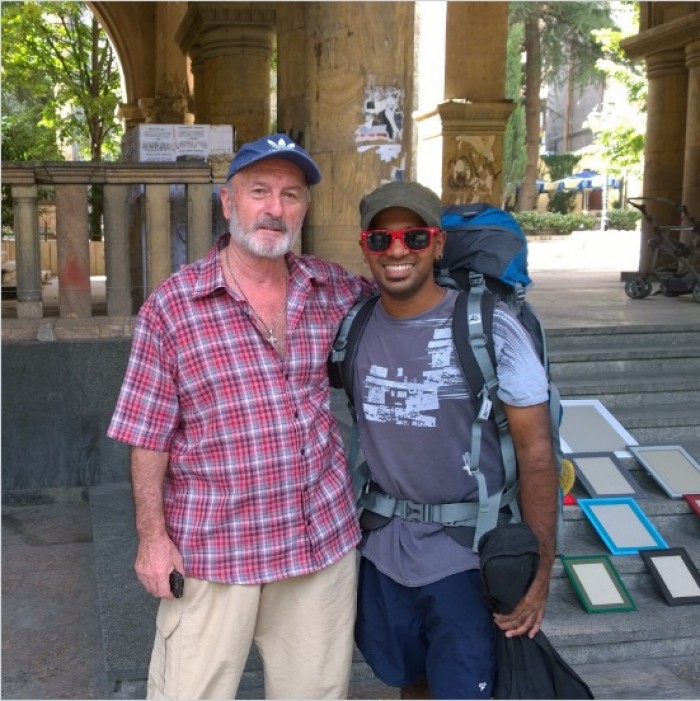
With my daypack stashed away in my backpack, I'm able to take better photos with friendly strangers and keep a tight grip on my tiny Thailand guitar.
Tip: Make sure your waist strap tightens nice and snug around you. A loose fitting waist strap is a useless one.
One size does not always fit all
I’m not talking about the capacity of the backpack here. I’m talking about the size of the person a backpack is made for.
Being a rather diminutively-sized individual, this is a rather important point for me. We aren’t all broad shouldered six and a half foot tall Vikings, which is why getting a backpack with an adjustable frame is probably your best bet.
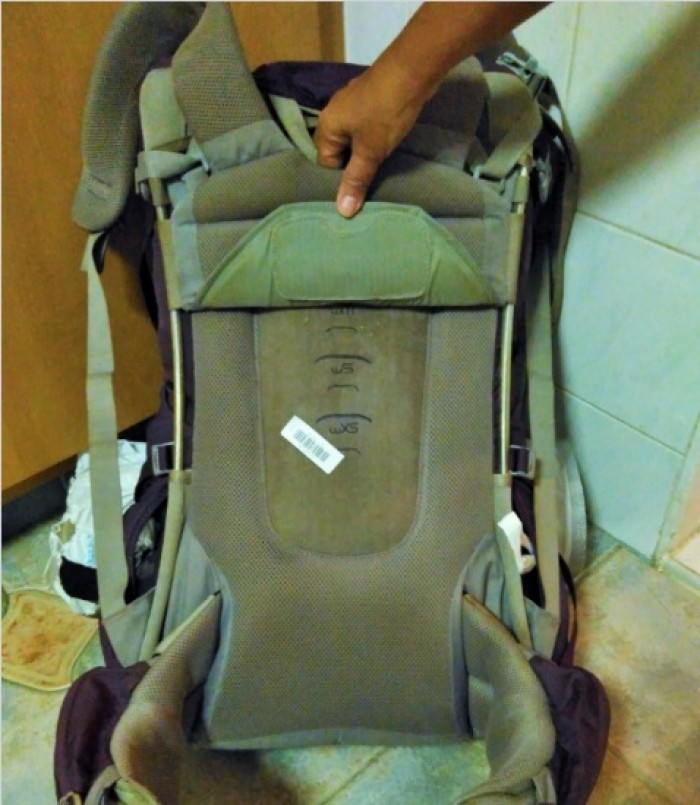
Unlike my Osprey with its mesh back-support system, Dianne's backpack is an adjustable one. Check out the metal frame at the sides, along which the movable panel slides up and down. The distance between the shoulder straps and waist straps can be made longer or shorter, to suit the height of the user.
You’ll also want to make sure the backpack you settle for has all of the adjustable shoulder, chest, and waist straps a good backpack ought to have, though this really shouldn’t be a problem since even the cheapest backpacks usually have more straps than you’ll know what to do with.
While we’re on this, we should probably talk also about how you’ll want your backpack to fit on you. You don’t want one that’s too wide or that sticks out too far behind you (an issue my Osprey had because of its mesh back-support system).
A tall, narrow backpack that fits really close to you keeps the weight close to your body, which gives you greater balance and stability.
Another tip: Pack your heavy stuff near the bottom of your pack, and closer to your back. Lighter stuff should go on top and outside.
Bells and Whistles
Well, maybe not a bell, but definitely a whistle. Most backpacks come with one, so that when you’re lost in a dark forest or cave, you won’t have to scream yourself hoarse trying to get someone’s attention.
Other frills include the following:
Rain Cover
Most branded backpacks come with a custom rain cover hidden neatly away in a little pocket at the bottom of your backpack. Sometimes, backpacks that don’t come with a rain cover go for a lot cheaper though, and you can save a decent amount of money buying one of these and getting a cheap rain cover separately.
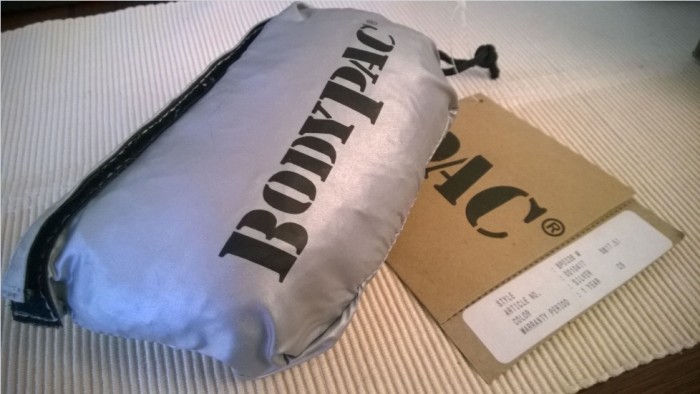
Bought this rain cover at the Beach Road army market for just 15 dollars. Most other rain covers cost closer to 50 bucks. Make sure you choose the right size to fit your backpack.
Straps on the outside for shoes / flip-flops and camping gear
You’ll want to fasten things like your foam sleeping mat or even your tent to the outside of your backpack, to save all-important space on the inside.
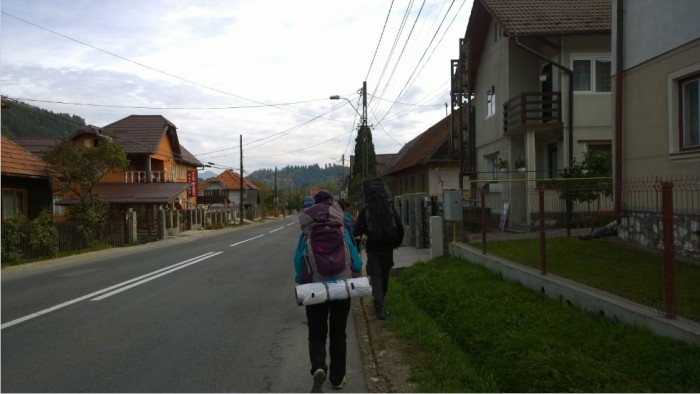
Dianne had to carry her hiking mat horizontally at the bottom of her backpack because the straps at the side weren't long enough. A bit of a problem every time she had to board a bus or walk through a narrow doorway.
Shoulder straps sometimes also come with little loops on the front that tighten when you pull the little clip attached. These are designed to hold hiking sticks, which you may decide to get once you start doing more demanding trails.
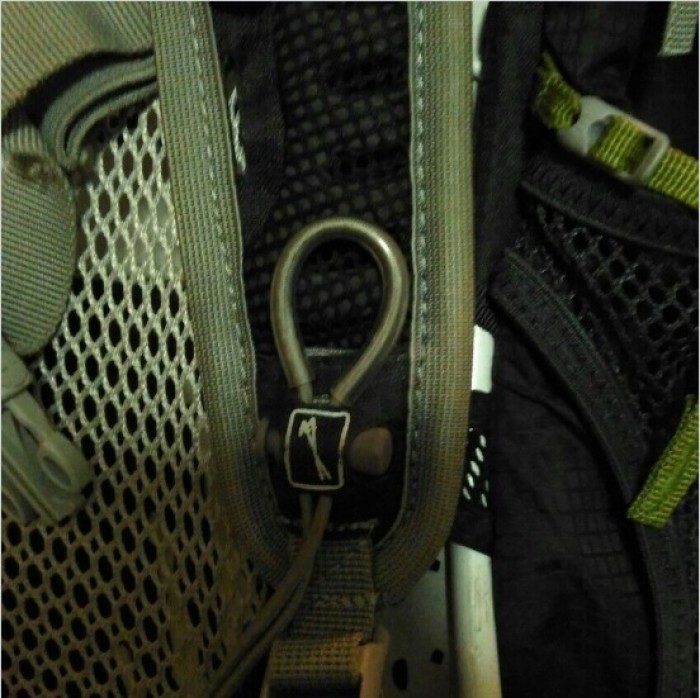
That little loopy thing is designed to hold your hiking stick
Pockets
You’ll want lots of these everywhere, so it’s easier to sort and compartmentalise your things. Elastic side pockets are a life saver, great for tissues, shades, loose change, water bottles, Swiss army knives, and the like.
Water-bag compartment and straw hole
Some backpacks come with an internal compartment for a water-bag, like those made by Camelbak. Backpacks like these typically come with a little hole near the top, that is sometimes covered by a little Velcro flap and labelled H2O. This hole is for the long water-bag straw to come out through, so that you don’t have to dig through your backpack every time you need a drink.
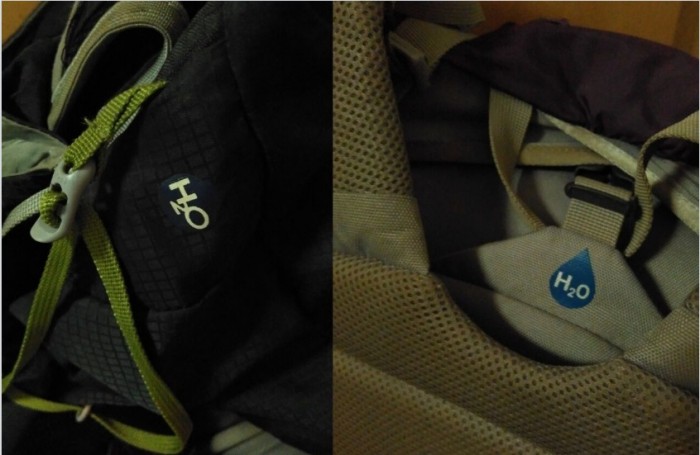
Look out for H2O symbols like these on your backpack
Water-bags are usually sold as separate items. They can be useful but they’re also a little expensive.
I’ve never had the need for one in spite of all the travelling and hiking I did, but my backpack’s water-bag compartment did come in useful anyway, because it was a great place to stash away my little laptop and tablet.
Securing a backpack
Just after I bought my first backpack, I realised one thing: hiking backpacks don’t lock up well.
This was new to me. All of the haversacks I’d used before on vacation had two handy zippers that I could easily fix a tiny padlock to. Hiking backpacks come with a drawstring, and have no proper place to attach a padlock. I started to freak out.
I did some research online: how do I secure a backpack? The answers I found were less than encouraging. There really wasn’t a surefire way of doing this.
Pacsafe
The one glimmer of hope I eventually found seemed promising. Pacsafe’s anti-theft wire mesh thingy seemed to do the job, and so I decided to get one secondhand (because a brand new one would have been too expensive).
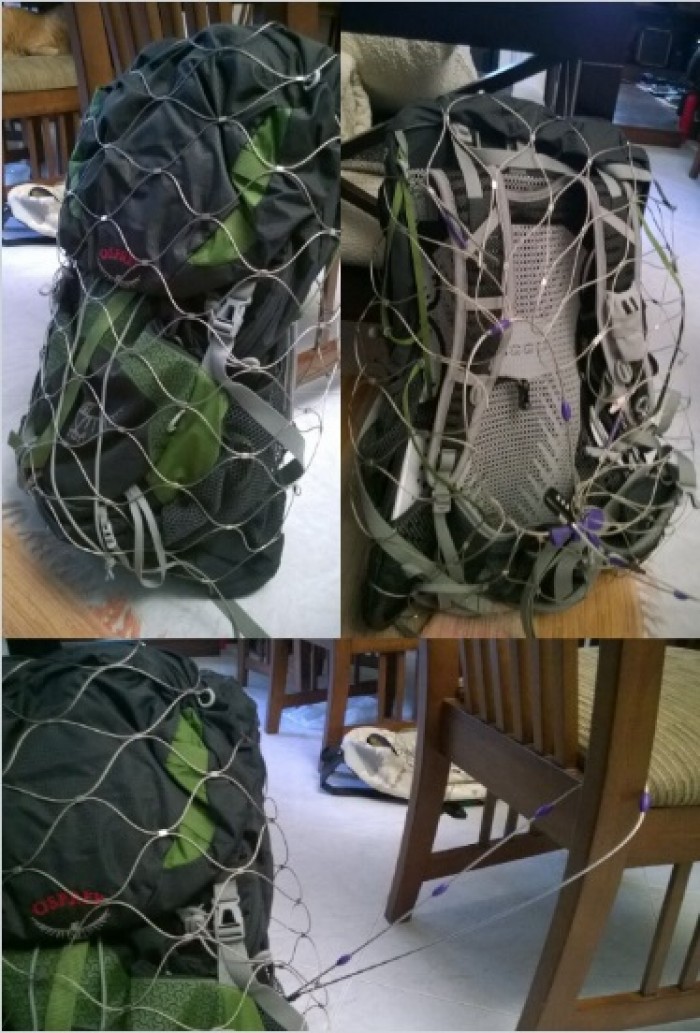
Front and back view. Once your backpack is all wrapped up, it can be secured to a chair, bed or pipe.
When I started travelling, I realised a few things somewhat quickly.
First off, you’d have to be pretty paranoid to think that, in the real world, the Pacsafe is a good idea. The cumbersome device takes half an eternity to put on, and wrestling with the thing for twenty sweaty minutes while you struggle to get its bits and pieces in place only draws unwanted attention to you and your now very conspicuous backpack.
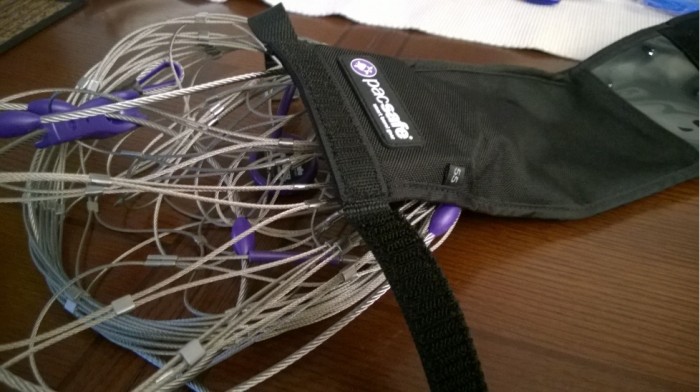
An unholy mess
“If anyone’s going through that much bother to protect a backpack, it has to contain something really REALLY valuable,” is what the Pacsafe screams out to prowling thieves loitering nearby.
Secondly, you shouldn’t be keeping valuable stuff in your unattended backpack anyway. That’s what your daypack is for. The safety-conscious traveller always transfers that expensive laptop to his or her daypack during a long train or bus ride, instead of leaving it stashed away in a backpack in some dark baggage compartment.
When going on a long day trip, the hostel safe is the safety-conscious traveller’s best friend too.
That being said, even a backpack bereft of valuables can get stolen or ransacked, and if you’re worried about that, then perhaps getting a ‘secure’ zip-up backpack with built-in safety features is worth considering.
‘Secure’ Backpacks
Personally, I’m not a believer in these. These backpacks are nearly suitcases. Go Google them. They’re heavy, bulky, and considerably more expensive, and they’re awful to look at too. Also, I don’t know how effective they actually are.
Sure, you get to zip all of its compartments up, making your pack difficult to get into. A real thief wouldn’t be trying to open your bag and search it for valuables, though. He’d take the whole thing.
Cable lock
Most thieves are opportunistic. They look for small windows to snatch and grab, and all you really need to counteract that is a simple deterrent, like a cable lock.
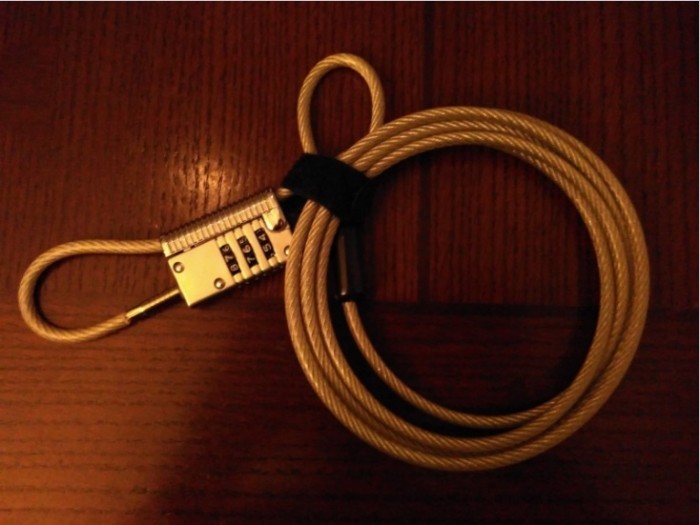
Adjustable backpacks usually come with strong metal frames that you can secure to a bedframe or steel pipe using your cable lock. This ought to be enough to stop a snatch and grab thief from snatching and grabbing.
A more determined thief could no doubt cut through the cable lock with a simple wire cutter and take the bag anyway, but the same goes for any backpack, no matter how secure it claims to be or how much you pay for it.
Chill out…
My advice when it comes to backpack safety is this. Don’t worry too much about it.
In my one year of travelling to 19 different countries, I’ve never once had anything stolen from my perpetually unlocked backpack. Part of the point of backpacking is to learn to accept some risk. It’s also about allowing yourself to not be in control of everything all of the time.
In the unlikely event that someone actually does steal your backpack, roll with the punches. Get yourself another one and continue to enjoy your travels.
Also read: 7 Alternative Brands to get Cool Travel Gear that you Probably Don’t Know of Yet
It’s your first time backpacking, so understand what you’re getting yourself into
Right now, you’re probably like I was back when I first started out. You’re not really the outdoor type, and you probably haven’t gone camping since your days back in school. You’re certainly no adventurer – better not bite off more than you can chew, you tell yourself. Nothing but safe hostels and modern civilisation for me. And you’re about to buy a backpack that suits the safe and comfortable style of travelling you think you’re better off sticking to.
The backpack you get determines to a significant extent the kind of traveller you’ll be. Get yourself a suitcase-looking thing with wheels and a convenient front zipper, and you’re buying for yourself a certain amount of convenience that’s well suited for safe and easy city travel.
You are, however, also preventing yourself from pushing past some of the limitations you’ve set for yourself in your mind.
You do have it in you, the capacity to rough it out in the great outdoors.
You will want to bite off more than you can chew.
And there is an adventurer in you just waiting to come out.
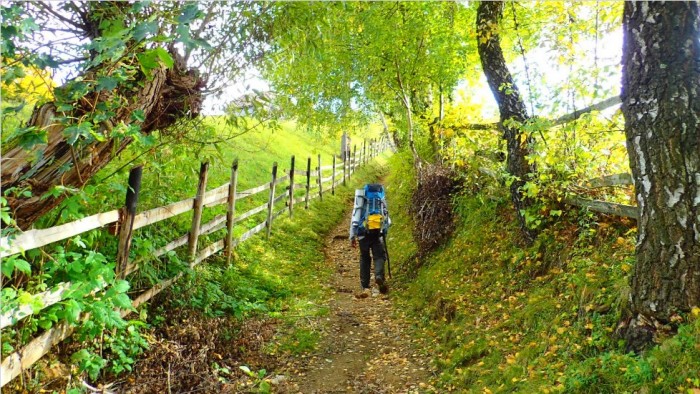
When I left Singapore back in 2014, I never expected to spend a week wandering the wilderness in Bulgaria, or trek the vast majestic plains of Song Kul over in Kyrgyzstan, but I did do these things and more.
Proper backpacking does that to you. It emboldens you and teaches you that you can be more than you are.
So when you set off to buy that backpack, expect that someday, you are going to want to get a tent and some proper camping gear, and challenge yourself out in the wilderness.
Expect that one day, you’ll eventually want to rough it out in the forests of Bulgaria or on the frosty plains of Kyrgyzstan.
And make sure you get for yourself a backpack that allows you to do all of that, and more.
